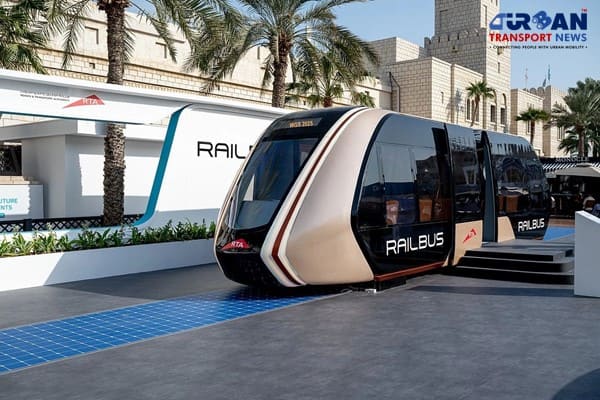 Patna to launch Eco-Friendly Water Metro; Trial Run soon between Digha and Kangan Ghats
Patna to launch Eco-Friendly Water Metro; Trial Run soon between Digha and Kangan Ghats Air India Group set to launch Flights Operations from Navi Mumbai International Airport
Air India Group set to launch Flights Operations from Navi Mumbai International Airport Chennai to launch 25-Year Mobility Plan with Unified QR Ticketing and One-App Transit System
Chennai to launch 25-Year Mobility Plan with Unified QR Ticketing and One-App Transit System Kochi Metro bags ₹4.4 crore contract to prepare DPR for Mumbai Water Metro Proejct
Kochi Metro bags ₹4.4 crore contract to prepare DPR for Mumbai Water Metro Proejct Navi Mumbai International Airport set for September launch; IndiGo and Akasa Air to lead Operations
Navi Mumbai International Airport set for September launch; IndiGo and Akasa Air to lead Operations Noida International Airport to be Inaugurated on October 30, Commercial Flights in 45 Days
Noida International Airport to be Inaugurated on October 30, Commercial Flights in 45 Days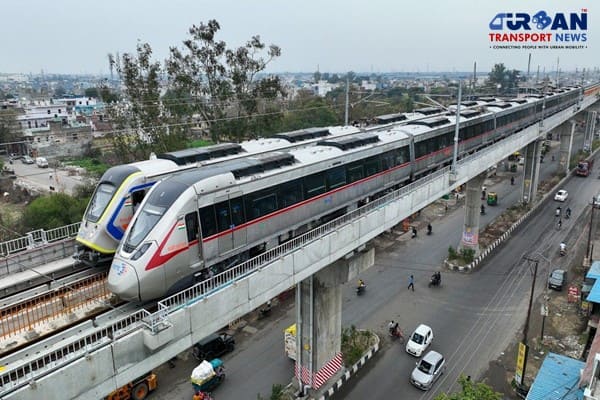 India Makes History: Namo Bharat RRTS and Meerut Metro to Run on Same Track
India Makes History: Namo Bharat RRTS and Meerut Metro to Run on Same Track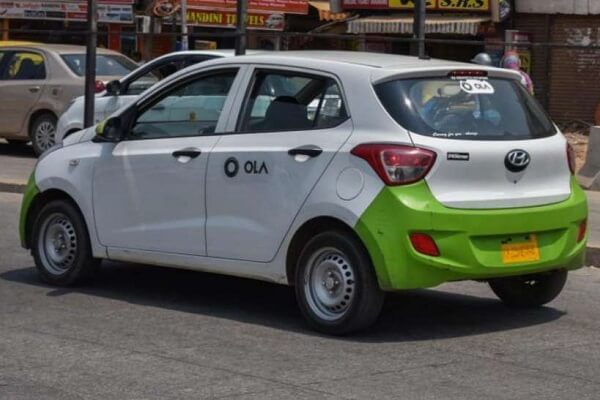 How the Standard for Car and Truck Wheels Is Changing
How the Standard for Car and Truck Wheels Is Changing How Cross-Docking Is Reshaping Urban Logistics
How Cross-Docking Is Reshaping Urban Logistics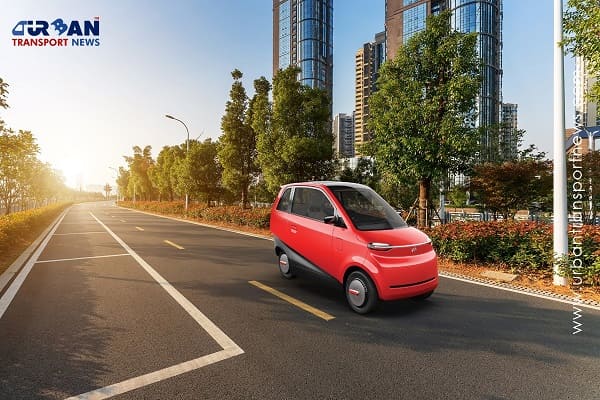 Ola, Uber Fares Set at 50% Minimum; Bike Taxis Legalised Under New Guidelines
Ola, Uber Fares Set at 50% Minimum; Bike Taxis Legalised Under New Guidelines
Sustainable Urban Mobility: A Key Concern for Cities Worldwide
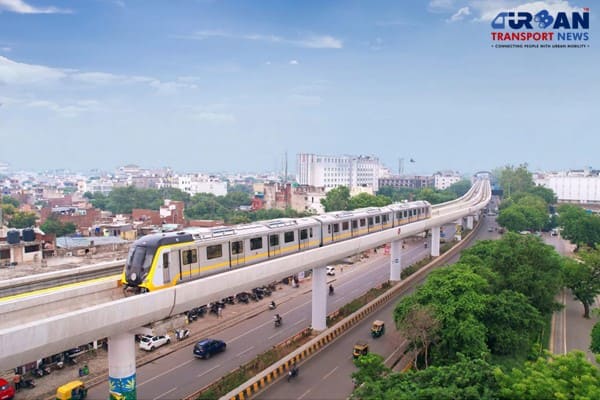
In today's rapidly urbanizing world, cities face numerous challenges related to transportation and mobility. As urban populations continue to grow, ensuring sustainable urban mobility has become a paramount concern for city planners and policymakers. This in-depth article explores the reasons why sustainable urban mobility has emerged as a key concern for cities around the globe, highlighting the environmental, social, and economic imperatives that drive the need for sustainable transportation solutions.
Environmental Impact
Cities are significant contributors to environmental degradation, with transportation being a major source of pollution and carbon emissions. Sustainable urban mobility seeks to address this issue by promoting cleaner and greener transportation options. By reducing reliance on fossil fuel-powered vehicles and encouraging the use of public transportation, cycling, and walking, cities can mitigate air pollution, minimize greenhouse gas emissions, and improve overall air quality. Sustainable mobility solutions play a vital role in combating climate change, preserving natural resources, and creating healthier urban environments.
Congestion and Traffic Management
Urban congestion and traffic gridlock pose significant challenges to cities, leading to wasted time, increased fuel consumption, and decreased productivity. Sustainable urban mobility emphasizes the efficient use of transportation infrastructure and encourages the adoption of alternative modes of transportation. By investing in public transit systems, developing cycling and pedestrian-friendly infrastructure, and implementing intelligent transportation systems, cities can reduce traffic congestion, improve travel times, and enhance overall mobility for their residents.
Social Equity and Accessibility
Inclusive and equitable access to transportation is a key pillar of sustainable urban mobility. Cities need to ensure that all residents, regardless of their income level or physical abilities, have convenient and affordable transportation options. Sustainable mobility solutions prioritize the development of well-connected public transit networks that reach underserved neighborhoods and promote accessibility for everyone. This improves social equity, enhances mobility for vulnerable populations, and reduces reliance on private vehicles, which can be prohibitively expensive for many individuals and families.
Public Health and Active Lifestyles
The sedentary nature of private vehicle use contributes to rising health issues such as obesity, heart disease, and respiratory ailments. Sustainable urban mobility encourages active transportation modes like walking and cycling, which promote physical activity and lead to healthier lifestyles. By creating safe and accessible walking and cycling infrastructure, cities can encourage their residents to embrace active modes of transportation, reducing sedentary behavior and improving public health outcomes.
Economic Benefits and Efficiency
Investments in sustainable urban mobility yield significant economic benefits for cities. By prioritizing public transit systems and alternative transportation modes, cities can reduce the overall cost of transportation for residents. Efficient public transit networks also contribute to increased economic productivity by reducing travel times and improving access to employment centers, educational institutions, and business districts. Moreover, sustainable mobility solutions spur economic growth by driving innovation and creating job opportunities in the transportation sector, particularly in emerging areas like electric vehicles and smart mobility technologies.
Sustainable Modes of Transport
1. Walking: The most elemental form of sustainable transport is walking. Humans can autonomously cover short distances with minimal environmental impact, making it a highly efficient mode of travel.
2. Bicycles & Scooters: Bicycles have been a sustainable mode of transportation for years. Many modern cities are now incorporating cycling into their urban centers, offering convenient and user-friendly options. Municipal plans in Spain have introduced quick-hire systems and cycle-only lanes to promote cycling, acknowledging its numerous benefits, including time and cost savings and reduced pollution. Alongside traditional bicycles, technological advancements have given rise to alternatives such as scooters and electric scooters, offering efficient and eco-friendly urban mobility solutions.
3. Public Transport: Public transport systems are undergoing a significant transformation toward sustainability. Buses, underground trains, trams, and similar modes of transport are increasingly powered by alternative energy sources to minimize environmental impact. Municipal, regional, and national initiatives are driving this shift away from polluting transportation methods. Public transport offers not only reduced emissions but also time-saving, comfort, and convenience, making it a preferred choice for urban commuting.
4. Carsharing and Carpooling: Carsharing and carpooling have gained prominence with the rise of companies actively promoting these sustainable mobility models. Carsharing involves renting a vehicle for short trips, while carpooling entails sharing a vehicle with fellow passengers traveling to the same destination. Both options have become popular in urban and suburban areas, catering to a wide range of mobility needs. Many companies are incorporating these models alongside mass-transport services to offer greater variety and flexibility to commuters.
Cities leading with Sustainable Urban Mobility
Sustainable urban mobility is no longer a distant dream but a pressing reality. Cities around the world are recognizing the need to transform their transportation systems to combat climate change and support the well-being of their populations. Here are the top 10 cities at the forefront of sustainable urban mobility, pioneering innovative solutions for a greener future.
1. Singapore
Singapore, with its ambitious target to phase out all diesel buses by 2040, is leading the way in sustainable urban mobility. The government is electrifying the public transport network, introducing more electric buses and trains, and deploying overhead charging solutions. By 2030, Singapore aims to have fully-electric trains on North-South and East-West lines, making it a model for sustainable transportation in Asia and beyond.
2. London, UK
London boasts a highly satisfied population, supported by an extensive and expanding transport network. Both underground and overground networks serve the majority of the city's residents. London has taken remarkable strides to reduce emissions, including the introduction of ultra-low emissions zones (ULEZ). Efforts to transition taxi services and public buses to electric alternatives have resulted in a 90% reduction in nitrogen oxide emissions.
3. Hong Kong, China
Hong Kong marked a significant step in electrification by approving the trial of its first-ever electrified double-decker bus in June 2022. The city's well-connected metro network ensures that 75% of its population lives within 1 km of a station. Despite peak periods, Hong Kong's metro maintains an impressive on-time rate of 99.9%, ranking it among the world's most reliable systems.
4. Paris, France
Paris boasts critical transport links in Europe, including the Eurostar e320, known as the British Rail Class 374, facilitating undersea mobility to destinations like London and Belgium. The Greater Paris region is undergoing a clean transport transformation, with plans to adopt e-buses and charging infrastructure. France-based public transport firm Transdev is working towards optimizing 100% e-buses with autonomous capabilities.
5. Madrid, Spain
Madrid, with its extensive metro system and growing fleet of e-buses, is dedicated to providing quality transport services. Approximately 89% of Madrid's population resides within 1 km of a station, facilitating convenient access to major city areas. The transition away from diesel-powered buses in favor of sustainable alternatives marks a significant milestone for the city.
6. Chicago, Illinois
Chicago boasts the second-largest public transport network in the United States, offering exceptional connectivity at affordable rates. The introduction of electrified commuter rail services in 2018, operated by Metra, has strengthened the city's commitment to sustainable mobility, particularly in connecting downtown Chicago with its southern suburbs.
7. Tokyo, Japan
Tokyo boasts the world's most extensive urban rail network, catering to over 3.5 billion passengers annually. While Tokyo's public transport is known for its punctuality, it occasionally faces rush-hour delays. However, the city's reliance on overhead power supplies significantly reduces its dependence on fossil-fuel-powered vehicles, contributing to sustainability.
8. Dubai, United Arab Emirates
Dubai, known as the 'City of Gold,' is fast becoming the 'City of Sustainability.' With substantial investments exceeding $27 billion, the city has electrified its transportation systems, including the metro line, buses, and trams. A pioneering e-bus pilot program, utilizing ABB overhead charging solutions, is a testament to Dubai's commitment to sustainable initiatives.
9. Shanghai, China
Shanghai, inspired by New York City's public transport model, has harnessed China's technological prowess to build a robust e-mobility infrastructure. Serving over two billion passengers annually, Shanghai's electrified network caters to one of the world's largest populations, underscoring the city's need for sustainable solutions.
10. Zurich, Switzerland
Zurich stands out for its commitment to sustainable innovation. The city has not only electrified its public transport network but also played a crucial role in research and development of clean, sustainable battery solutions. Swiss Clean Battery, an entrepreneurial endeavor, is working towards producing solid-state batteries with enhanced performance capabilities, paving the way for a cleaner future.
These cities serve as inspiring examples of how urban centers can embrace sustainability in their mobility solutions, offering hope for a cleaner and more eco-friendly future.
Conclusion
Sustainable urban mobility has emerged as a critical concern for cities worldwide due to its multifaceted impact on the environment, social equity, public health, and economic prosperity. By prioritizing sustainable transportation solutions, cities can address pressing environmental challenges, reduce congestion, enhance accessibility, promote public health, and boost economic efficiency. The integration of smart technologies, investment in public transit, development of cycling and pedestrian infrastructure, and adoption of clean energy alternatives are essential components of sustainable urban mobility strategies. As cities strive for a more sustainable future, prioritizing and investing in sustainable urban mobility will play a pivotal role in creating livable, inclusive, and thriving urban environments for generations to come.





